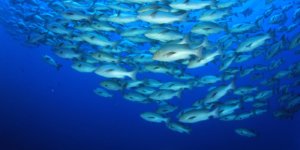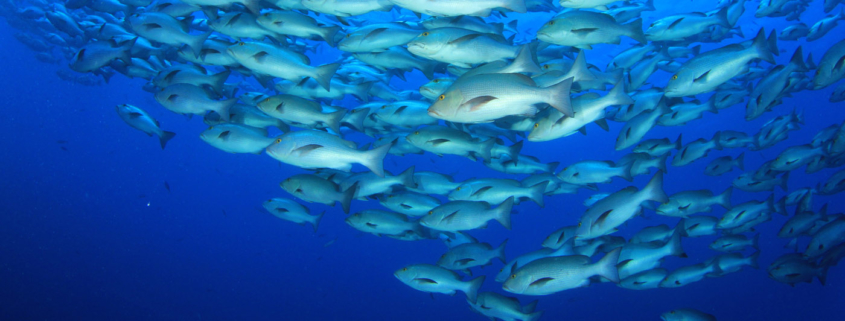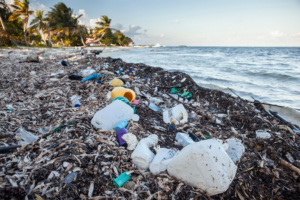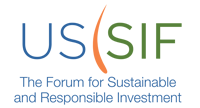Investing in the ‘Blue Economy’
For as long as anyone can remember, oceans have provided a source of sustenance and wonder to humanity. Whether by supporting coastal populations or perhaps even playing a role in human evolutionary development, our reliance on marine resources has been profound. In many cultures and societies, this reliance has not gone unappreciated. Ancient tribes and civilizations often looked at the oceans as a gift from the gods, and in return, had tremendous respect for their sanctity. Fast-forward to a pollution-ridden 2019, and the oceans are now in the worst state of our existence.
By their very nature, being that all streams flow to rivers and all rivers lead to the sea, the oceans are the end point for much of the pollution we produce on land, however far from the coasts we may be. And from dangerous carbon emissions, to choking plastic, to leaking oil and constant noise, the types of ocean pollution humans generate are vast.
The majority of the garbage that enters the ocean each year is plastic, and here to stay. That’s because unlike other trash, grocery bags, water bottles, drinking straws, and yogurt containers, among eight million metric tons of the plastic items we dispose of (instead of recycle), do not biodegrade. Instead, they will persist in the environment for a millennium, polluting our beaches, entangling marine life, and getting ingested by fish and seabirds. Plastic, while incredibly detrimental to marine life on its own, is not the only source of pollution flooding our seas.
Today’s seas absorb as much as a quarter of all man-made carbon emissions, changing the pH of surface waters, and rapidly leading to acidification, or “osteoporosis of the seas”. It’s estimated that by the end of this century, if we keep pace with our current emissions practices, the surface waters of the ocean could be nearly 150 percent more acidic than they are now, bringing down marine ecosystems and the coastal economies that depend on them with them.
While this whole blog post could easily be written solely about the destructive impact of pollution on marine life, I want to shift the attention to the tremendous opportunities these challenges present us. Yes, in order to unlock this opportunity we are going to have to open our wallets, and not just a small portion of governments and NGOs across the globe, but your average person and investor. A small price to pay to restore and preserve marine resources that will keep us and future generations alive for years to come.
Research suggests that impact-focused investors alone have approximately $5.6 billion in capital to deploy over the next five years and have the means to dramatically reshape the world’s “Blue Economy.” The ‘Blue Economy’ refers to an emerging concept which encourages better stewardship of our ocean or ‘blue’ resources. It supports all of the United Nations’ Sustainable Development Goals, especially SDG 14 ‘Life Below Water’, and recognizes that this will require ambitious, coordinated actions to sustainably manage, protect, and preserve our oceans.
The problem then becomes: how can we open the faucet on this sitting capital, and once funds begin to trickle in at higher rates, how can we effectively channel these funds to the places where they will make the highest impact?
First, we are going against a generational notion that investing in the planet, and more specifically the oceans, is charity, rather than an opportunity to achieve substantial economic gains. While there are plenty of impact and Pro-Bono investors willing to invest money without seeing an immediate chance of return, the only way we are going to get the adequate funding that our oceans so desperately need, is to tap in to the group of investors solely motivated by the chance to realize gains. Luckily for us, we have the research to prove that these gains are possible.
Extensive research done by sustainably-driven groups and organizations like the Bloomberg Philanthropies Vibrant Ocean Initiative, Rockefeller Foundation, and Encourage Capital prove that impact investors in the fisheries sector have a real opportunity to realize potentially attractive financial returns, while at the same time creating lasting social and environmental impacts. The Investment Blueprints provided by Encourage Capital, (a new kind of investment firm that seeks to make profitable investments that solve critical social and environmental issues) show that impact-oriented business models benefiting from stock stabilization or restoration have the potential to generate equity returns between 5% and 35%, using conservative growth and exit assumptions. These returns are driven primarily by increased volumes linked to stock recoveries, improvements in supply chain efficiency, access to higher-value markets, and reductions in raw material supply volatility.

Furthermore, overall economic value creation associated with ocean reform is quite compelling. A recent study conducted by the University of California Santa Barbara’s Sustainable Fisheries Group concluded that the restoration of distressed fisheries globally could increase global fish stocks by 36%, boost seafood production by an additional 12 million metric tons, or 14% of current wild capture production, and in turn, generate an additional $51 billion in aggregate profits within 10 years.The global restoration potential offers an ample seascape (pardon the pun) of investment opportunities for impact investors, especially if management and governance improvements are linked with business models that profit from stable or improving stock health.
The opportunities are abundant, and with rapidly advancing marine technology, paired alongside a mind-boggling $68 trillion being passed to sustainably-conscious children through the largest wealth transfer ever, there is no excuse not to make the oceans and the ‘Blue Economy’ a priority for years to come. The ocean is the largest ecosystem on Earth, it is the planet’s life support system. Oceans generate half of the oxygen we breathe and, at any given moment, they contain more than 97% of the world’s water. Put simply, without them, we would not exist. The ball is in our court, what will we do with it?










